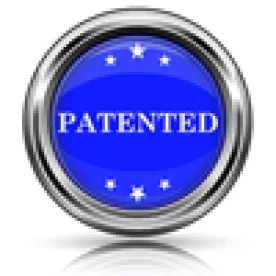In its Final Written Decision, the Board found that all of the challenged claims (1, 2, 6-11, and 13-19) of the ’126 Patent and denied Patent Owner’s Motion to Amend. The ’126 Patent attempts to address degradation in optical recording media, such as CDs and DVDs, which occurs after repeated recording or playing.
The Board began with claim construction, stating that the terms are given their broadest reasonable construction in light of the specification. The Board first addressed the term “supplementary spare area” or “SSA,” and the parties disputed whether the spare area had to be distinct from the primary spare area or spaced apart from the primary spare area. The Board found that the spare area can be spaced from or adjacent to the primary spare area. The Board then construed “a first mode in which both a primary spare area and a supplementary spare area are assigned” and “a second mode in which a primary spare area is assigned.” Patent Owner argued that the terms required that the size of the spare area of the first mode be larger than the size of the spare area of the second mode; however, the Board disagreed, finding that the ’126 Patent broadly disclosed the invention and expressly stated that the disc example relied upon in the invention does not limit the invention. Finally, the Board construed “formatted.” The parties disagreed on when the recording medium must be formatted, and the Board sided with Petitioner that formatting could occur at any time based upon a statement by counsel for Patent Owner at the trial.
The Board then examined the grounds for unpatentability. First, the Board addressed whether claims 1, 7, 8, 15, and 19 would have been anticipated by Kawano. The Board found Patent Owner’s arguments unpersuasive because they were all premised upon improper claim constructions.
The Board then reviewed whether claim 2 would have been obvious over Kawano and Ohata. Patent Owner agreed with Petitioner’s characterization of Ohata’s disclosure, but argued that Ohata provides a secondary replacement area after formatting, that modifying Kawano in the manner proposed would increase the complexity and fundamentally change Kawano’s principle of operation, and that Ohata’s spare areas are adjacent to one another. The Board dismissed the first and third challenges based upon the claim constructions. As to the Patent Owner’s second argument, the Board found that Ohata does not teach away from providing replacement areas generally in disks that are fouled while maintaining the same size primary spare area.
Next, the Board discussed whether claims 6 and 18 would have been obvious over Kawano and Ozaki. Patent Owner argued that PSA 13 in “Format 2” of Ozaki is not in the top of the data area as required by the claims, and that the proposed modification would change the principle operation of Kawano. The Board was persuaded by Petitioner’s position that employing “Format 3” of Ozaki would satisfy the shifting principle. The Board then addressed whether claims 6 and 19 would have been obvious over Kulakowski. Patent Owner argued that Kulakowski does not teach selecting a reserve area size of zero. However, the Board found that Kulakowski generally suggests selecting any size, including a size of zero.
The Board lastly discussed whether claims 10, 11, 13, 14, and 17 would have been obvious over Kawano, Ohata, and Kulakowski. The Board found that Petitioner’s explanations and claim charts demonstrated by a preponderance of the evidence that the combination of Kawano, Ohata, and Kulakowski renders obvious claims 10, 11, 13, 14, and 17.
The Board then turned to Patent Owner’s Motion to Amend proposing to substitute claims 20-24 for claims 1, 7, 8, 15, and 19. Petitioner noted that proposed claims 20 and 23 appeared to claim the same subject matter as claim 2, and Petitioner applied the same prior art combination to rebut the patentability of claims 20 and 23. At trial, counsel for Patent Owner confirmed this understanding, and the Board denied the amendment of claims 20 and 23 on that basis. Patent Owner did not present separate patentability arguments for proposed claims 21-22 and 24, which recite the limitations originally recited in claims 7, 8, and 19. Therefore, the Board also denied those proposed amendments.
Toshiba Samsung Storage Technology Korea Corporation v. LG Electronics, Incorporated, IPR2014-00204
Paper 31: Final Written Decision
Dated: March 31, 2015
Patent 6,477,126
Before: Karl D. Easthom, Rama G. Elluru, and David C. McKone
Written by: Easthom
Related Proceedings: LG Electronics, Inc. v. Toshiba Samsung Storage Technology Corp., No. 1:12-cv-01063 (D. Del.)



 />i
/>i

